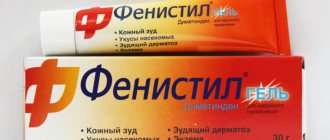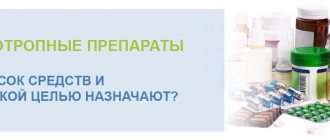Clexane is just one of many drugs that are used in medicine, including obstetrics, gynecology and reproductive medicine to thin the blood. For example, fraxiparin, fragmin and others have the same effect. All of these are low molecular weight heparins. Their feature is resistance to the formation of blood clots, thanks to which it is possible to save the lives of many people (including those with today’s dangerous viral infection), as well as preserve pregnancy and help avoid complications during hormonal therapy.
Blood clotting disorders underlie many pathological processes. I will not describe in detail the entire complex mechanism of blood clot formation, I will only say that this is the most common cause of early pregnancy loss. The sources of such complications can be both severe gestosis and the most dangerous condition - disseminated intravascular coagulation syndrome, i.e. a condition when, due to the massive formation of blood clots, the blood coagulation system “breaks” and can no longer work, after which bleeding is almost impossible to stop.
Adequate and timely use of anticoagulants can save you from all these problems.
When we use them
- After transfer against the background of ovulation stimulation to prevent ovarian hyperstimulation syndrome (if there is a risk of developing such a complication, and for some reason the transfer could not be postponed);
- In the case of preparing the endometrium for pregnancy while using hormone replacement therapy with large dosages of estrogens (they have a rather dangerous side effect - the risk of blood clots);
- In cases of recurrent miscarriage (loss of 2 pregnancies), especially if examination in the blood reveals antibodies to phospholipids, lupus anticoagulant, elevated levels of d-Dimer, Leiden mutation and other factors predisposing to impaired hemostasis.
- During pregnancy, the level of d-dimer, hemostasiogram and other factors are necessarily monitored, on the basis of which a decision is made to continue taking heparin drugs (sometimes they have to be taken until birth).
Clexane®
Subcutaneously, except in special cases (see below subsections “Treatment of ST-segment elevation myocardial infarction, drug or percutaneous coronary intervention” and “Prevention of thrombus formation in the extracorporeal circulation during hemodialysis”).
Prevention of venous thrombosis and embolism during surgical interventions in patients at moderate and high risk
For patients with a moderate risk of developing thrombosis and embolism (for example, abdominal surgery), the recommended dose of Clexane® is 20 mg once daily subcutaneously. The first injection should be given 2 hours before surgery.
Patients with a high risk of developing thrombosis and embolism (for example, during orthopedic operations, surgical operations in oncology, patients with additional risk factors not related to the operation, such as congenital or acquired thrombophilia, malignancy, bed rest for more than three days, obesity, venous history of thrombosis, varicose veins of the lower extremities, pregnancy) the drug is recommended at a dose of 40 mg once a day subcutaneously, with the first dose administered 12 hours before surgery. If earlier preoperative prophylaxis is necessary (for example, in patients at high risk of developing thrombosis and thromboembolism awaiting delayed orthopedic surgery), the last injection should be given 12 hours before surgery and 12 hours after surgery.
The average duration of treatment with Clexane® is 7-10 days. If necessary, therapy can be continued as long as the risk of thrombosis and embolism remains, and until the patient switches to an outpatient regimen.
For major orthopedic operations, it may be advisable to continue treatment after initial therapy by administering Clexane® at a dose of 40 mg once daily for five weeks.
For patients at high risk of venous thromboembolism who have undergone surgery, abdominal and pelvic surgery due to cancer, it may be advisable to increase the duration of administration of Clexane® at a dose of 40 mg once daily for four weeks.
Prevention of venous thrombosis and embolism in patients on bed rest due to acute therapeutic diseases
The recommended dose of Clexane® is 40 mg once a day, subcutaneously, for 6-14 days. Therapy should be continued until the patient is completely outpatient (maximum 14 days).
Treatment of deep vein thrombosis with or without pulmonary embolism
The drug is administered subcutaneously at the rate of 1.5 mg/kg body weight once a day or 1 mg/kg body weight twice a day. The dosage regimen should be selected by the physician based on an assessment of the risk of thromboembolism and the risk of bleeding. In patients without thromboembolic complications and with a low risk of developing venous thromboembolism, the drug is recommended to be administered subcutaneously at a dose of 1.5 mg/kg body weight once a day. In all other patients, including patients with obesity, symptomatic pulmonary embolism, cancer, recurrent venous thromboembolism and proximal thrombosis (iliac vein), the recommended dose is 1 mg/kg twice daily.
The average duration of treatment is 10 days. Therapy with indirect anticoagulants should be started immediately, and treatment with Clexane must be continued until a therapeutic anticoagulant effect is achieved (INR [International Normalized Ratio] values should be 2.0-3.0).
Prevention of thrombus formation in the extracorporeal circulation system during hemodialysis
The recommended dose of Clexane® is on average 1 mg/kg body weight. If there is a high risk of bleeding, the dose should be reduced to 0.5 mg/kg body weight with double vascular access or to 0.75 mg/kg with single vascular access.
During hemodialysis, Clexane® should be injected into the arterial site of the shunt at the beginning of the hemodialysis session. One dose is usually sufficient for a four-hour session, however, if fibrin rings are detected during longer hemodialysis, you can additionally administer the drug at the rate of 0.5-1 mg/kg body weight. There are no data available for patients using enoxaparin sodium for prophylaxis or treatment and during hemodialysis sessions.
Treatment of unstable angina and non-ST segment elevation myocardial infarction
The drug Clexane® is administered at the rate of 1 mg/kg body weight every 12 hours, subcutaneously, while using antiplatelet therapy. The average duration of therapy is at least 2 days and continues until the patient's clinical condition has stabilized. Typically, the administration of the drug lasts from 2 to 8 days. Acetylsalicylic acid is recommended for all patients who do not have contraindications, with an initial dose of 150-300 mg orally, followed by a maintenance dose of 75-325 mg once daily.
Treatment of acute ST-segment elevation myocardial infarction, medical or percutaneous coronary intervention
Treatment begins with a single intravenous bolus of enoxaparin sodium at a dose of 30 mg. Immediately after this, enoxaparin sodium is administered subcutaneously at a dose of 1 mg/kg body weight. Next, the drug is administered subcutaneously at 1 mg/kg body weight every 12 hours (maximum 100 mg of enoxaparin sodium for each of the first two subcutaneous injections, then 1 mg/kg body weight for the remaining subcutaneous doses, that is, for body weight more than 100 kg, a single dose cannot exceed 100 mg). As soon as possible after the diagnosis of acute ST-segment elevation myocardial infarction, patients should be prescribed concomitant acetylsalicylic acid and, unless contraindicated, acetylsalicylic acid (in doses of 75-325 mg) should be continued daily for at least 30 days.
The recommended duration of treatment with Clexane® is 8 days or until the patient is discharged from the hospital (if the period of hospitalization is less than 8 days).
When combined with thrombolytics (fibrin-specific and fibrin-nonspecific), enoxaparin sodium should be administered between 15 minutes before the start of thrombolytic therapy and up to 30 minutes after it.
In patients aged 75 years and older, the initial intravenous bolus is not used. The drug is administered subcutaneously at a dose of 0.75 mg/kg every 12 hours (maximum 75 mg of enoxaparin sodium for each of the first two subcutaneous injections, then 0.75 mg/kg body weight for the remaining subcutaneous doses, that is, for body weight more than 100 kg, single dose cannot exceed 75 mg).
In patients undergoing percutaneous coronary intervention, if the last subcutaneous injection of enoxaparin sodium was given less than 8 hours before inflation of the balloon catheter inserted into the site of narrowing of the coronary artery, additional administration of enoxaparin sodium is not required. If the last subcutaneous injection of enoxaparin sodium was administered more than 8 hours before inflation of the balloon catheter, an additional intravenous bolus of enoxaparin sodium should be administered at a dose of 0.3 mg/kg.
Features of drug administration
The pre-filled disposable syringe is ready for use.
The drug cannot be administered intramuscularly!
Subcutaneous administration
It is advisable to carry out injections with the patient lying down. When using pre-filled 20 mg and 40 mg syringes, do not remove air bubbles from the syringe before injection to avoid loss of the drug. Injections should be performed alternately into the left or right anterolateral or posterolateral surface of the abdomen.
The needle must be inserted to its full length, vertically (not from the side), into a skin fold, collected and held until the injection is completed between the thumb and forefinger. The skin fold is released only after the injection is completed.
Do not massage the injection site after administering the drug.
Intravenous bolus
An intravenous bolus of enoxaparin sodium should be administered through a venous catheter. Enoxaparin sodium should not be mixed or administered with other drugs. In order to avoid the presence of traces of other drugs in the infusion system and their interaction with enoxaparin sodium, the venous catheter should be flushed with a sufficient amount of 0.9% sodium chloride solution or 5% dextrose solution before and after intravenous bolus administration of enoxaparin sodium. Enoxaparin sodium can be safely administered with 0.9% sodium chloride solution and 5% dextrose solution.
To administer a 30 mg bolus of enoxaparin sodium in the treatment of acute ST-segment elevation myocardial infarction, excess drug is removed from 60 mg, 80 mg and 100 mg glass syringes so that only 30 mg (0.3 ml) remains. A dose of 30 mg can be administered directly intravenously.
For intravenous bolus administration of enoxaparin sodium through a venous catheter, pre-filled syringes for subcutaneous administration of the drug 60 mg, 80 mg and 100 mg can be used. It is recommended to use 60 mg syringes as this reduces the amount of drug removed from the syringe. 20 mg syringes are not used because they do not contain enough drug to administer a 30 mg bolus of enoxaparin sodium. 40 mg syringes are not used because they do not have graduations and therefore it is impossible to accurately measure the amount of 30 mg.
To improve the accuracy of additional intravenous bolus administration of small volumes into the venous catheter during percutaneous coronary interventions, it is recommended to dilute the drug to a concentration of 3 mg/ml. It is recommended to dilute the solution immediately before administration.
To obtain a 3 mg/mL enoxaparin sodium solution using a 60 mg prefilled syringe, it is recommended to use a 50 mL infusion solution container (i.e., 0.9% sodium chloride solution or 5% dextrose solution). 30 ml of solution is removed and removed from the container with the infusion solution using a regular syringe. Enoxaparin sodium (contents of the syringe for subcutaneous administration is 60 mg) is injected into the remaining 20 ml of infusion solution in the container. The contents of the container with a diluted solution of enoxaparin sodium are carefully mixed. For administration, the required volume of a diluted solution of enoxaparin sodium is extracted using a syringe, which is calculated using the formula:
Volume of diluted solution = Patient’s body weight (kg) x 0.1
or using the table below.
Volumes to be administered intravenously after dilution to a concentration of 3 mg/ml
| Patient's body weight, kg | Required dose (0.3 mg/kg), mg | The volume of solution required for administration, diluted to a concentration of 3 mg/ml |
| 45 | 13,5 | 4,5 |
| 50 | 15 | 5 |
| 55 | 16,5 | 5,5 |
| 60 | 18 | 6 |
| 65 | 19,5 | 6,5 |
| 70 | 21 | 7 |
| 75 | 22,5 | 7,5 |
| 80 | 24 | 8 |
| 85 | 25,5 | 8,5 |
| 90 | 27 | 9 |
| 95 | 28,5 | 9,5 |
| 100 | 30 | 10 |
| 105 | 31,5 | 10,5 |
| 110 | 33 | 11 |
| 115 | 34,5 | 11,5 |
| 120 | 36 | 12 |
| 125 | 37,5 | 12,5 |
| 130 | 39 | 13 |
| 135 | 40,5 | 13,5 |
| 140 | 42 | 14 |
| 145 | 43,5 | 14,5 |
| 150 | 45 | 15 |
Switching between enoxaparin sodium and oral anticoagulants
— Switching between enoxaparin sodium and vitamin K antagonists (VKAs)
Monitoring the effect of VKA requires physician supervision and laboratory tests [prothrombin time, reported as INR].
Because the maximum effect of VKAs takes time to develop, therapy with enoxaparin sodium should be continued at a constant dose for as long as necessary to maintain INR values (based on two consecutive determinations) in the desired therapeutic range, depending on the indication.
For patients receiving VKA, discontinuation of VKA and administration of the first dose of enoxaparin sodium should occur after the INR has decreased below the therapeutic range.
— Switching between enoxaparin sodium and direct oral anticoagulants (DOACs)
Discontinuation of enoxaparin sodium and administration of DOACs should be carried out 0-2 hours before the next scheduled administration of enoxaparin sodium in accordance with the instructions for the use of oral anticoagulants.
For patients receiving DOACs, administration of the first dose of enoxaparin sodium and discontinuation of direct oral anticoagulants should be carried out at a time point corresponding to the next planned use of DOACs.
Use during spinal/epidural anesthesia or lumbar puncture
If anticoagulant therapy is used during epidural or spinal anesthesia/analgesia or lumbar puncture, neurological monitoring is necessary due to the risk of developing neuraxial hematomas (see section "Special Instructions").
— Use of enoxaparin sodium in prophylactic doses
Insertion or removal of a catheter should occur at least 12 hours after the last injection of a prophylactic dose of enoxaparin sodium.
When using a continuous technique, an interval of at least 12 hours must be maintained before catheter removal.
In patients with CC ≥15 and <30 ml/min, doubling the time until puncture or catheter insertion/removal should be considered to at least 24 hours. Preoperative administration of enoxaparin sodium 2 hours before surgery at a dosage of 20 mg is incompatible with neuraxial anesthesia .
— Use of enoxaparin sodium in therapeutic doses
Insertion or removal of the catheter should be carried out at least 24 hours after the last injection of a therapeutic dose of enoxaparin sodium (see section "Contraindications").
When using a continuous technique, an interval of at least 24 hours must be maintained before catheter removal.
In patients with CC ≥15 and <30 ml/min, doubling the time until puncture or catheter insertion/removal should be considered to at least 48 hours.
Patients receiving enoxaparin sodium at doses of 0.75 mg/kg or 1 mg/kg body weight twice daily should not receive a second dose of the drug to extend the interval before catheter insertion or replacement. Similarly, the possibility of delaying the next dose of the drug by at least 4 hours should be considered, based on an assessment of the benefit/risk ratio (risk of thrombosis and bleeding during the procedure, taking into account the presence of risk factors in patients). At these time points, anti-Xa activity of the drug is still detectable, and time delays do not guarantee that the development of a neuraxial hematoma can be avoided.
Dosage regimen
in
special groups of patients
Children under 18 years of age
The safety and effectiveness of enoxaparin sodium in children have not been established.
Elderly patients (over 75 years old)
With the exception of the treatment of myocardial infarction with ST segment elevation, for all other indications, dose reduction of enoxaparin sodium in elderly patients in the absence of impaired renal function is not required.
Patients with impaired renal function
— Severe renal impairment (creatinine clearance ≥15 and <30 ml/min)
The use of enoxaparin sodium is not recommended for patients with end-stage chronic kidney disease (creatinine clearance <15 ml/min) due to the lack of data, except in cases of prevention of thrombus formation in the extracorporeal circulation system during hemodialysis.
In patients with severe renal impairment (creatinine clearance ≥15 and <30 ml/min), the dose of enoxaparin sodium is reduced in accordance with the tables below, since these patients experience an increase in systemic exposure (duration of action) of the drug.
When using the drug in therapeutic doses, the following dosage adjustment is recommended:
| Usual dosage regimen | Dosage regimen for severe renal failure |
| 1 mg/kg body weight subcutaneously twice daily | 1 mg/kg body weight subcutaneously once daily |
| 1.5 mg/kg body weight subcutaneously once daily | 1 mg/kg body weight subcutaneously once daily |
| Treatment of acute ST-segment elevation myocardial infarction in patients under 75 years of age | |
| A single intravenous bolus of 30 mg plus 1 mg/kg body weight subcutaneously; followed by subcutaneous administration at a dose of 1 mg/kg body weight twice daily (maximum 100 mg for each of the first two subcutaneous injections) | A single intravenous bolus of 30 mg plus 1 mg/kg body weight subcutaneously; followed by subcutaneous administration at a dose of 1 mg/kg body weight once daily (maximum 100 mg for the first subcutaneous injection only) |
| Treatment of acute ST-segment elevation myocardial infarction in patients aged 75 years and older | |
| 0.75 mg/kg body weight subcutaneously twice daily without an initial intravenous bolus (maximum 75 mg for each of the first two subcutaneous injections) | 1 mg/kg body weight subcutaneously once daily without initial intravenous bolus (maximum 100 mg for first subcutaneous injection only) |
When using the drug for prophylactic purposes, it is recommended to adjust the dosage regimen, presented in the table below.
| Usual dosage regimen | Dosage regimen for severe renal failure |
| 40 mg subcutaneously once daily | 20 mg subcutaneously once daily |
| 20 mg subcutaneously once daily | 20 mg subcutaneously once daily |
The recommended dosage adjustment does not apply to hemodialysis.
— Renal dysfunction of mild (creatinine clearance ≥50 and <80 ml/min) and moderate (creatinine clearance ≥30 and <50 ml/min) severity
No dose adjustment is required, but patients should be under close medical supervision.
Patients with liver dysfunction
Due to the lack of clinical studies, Clexane® should be used with caution in patients with impaired liver function.
Instructions for self-injection of the drug Clexane® (pre-filled syringe with a needle protection system)
1. Wash your hands and the area of skin (injection site) where you will inject the drug with soap and water. Dry them.
2. Take a comfortable sitting or lying position and relax. Make sure that you can clearly see the place where you are going to inject the drug. It is optimal to use a lounge chair, chaise longue or bed covered with pillows for support.
3. Select the injection site on the right or left side of the abdomen. This place should be at least 5 centimeters from the navel towards the sides. Do not self-inject within 5 centimeters of the belly button or around existing scars or bruises. Alternate injection sites on the right and left sides of the abdomen, depending on where you injected the drug the previous time.
4. Wipe the injection site with a swab moistened with alcohol.
5. Carefully remove the cap from the needle of the syringe containing Clexane®. Set the cap aside. The syringe is pre-filled and ready to use. Do not press the plunger to force out air bubbles before inserting the needle into the injection site. This may result in loss of the drug. After removing the cap, do not allow the needle to touch anything. This is necessary to maintain the sterility of the needle.
6. Hold the syringe in the hand with which you are writing, as you would hold a pencil, and with the other hand, gently squeeze the alcohol-wiped injection site between the thumb and forefinger so as to form a fold of skin. Hold the skin fold the entire time you inject the drug.
7. Hold the syringe with the needle pointing down (vertical at a 90° angle). Insert the entire length of the needle into the skin fold.
8. Press the plunger with your finger. This will ensure that the drug is injected into the subcutaneous fatty tissue of the abdomen. Hold the skin fold the entire time you inject the drug.
9. Remove the needle by pulling it back without deviating from its axis. The safety mechanism will automatically close the needle. You can now stop holding the skin fold. System b
Clexane's analogs
Level 4 ATC code matches:
Angioflux
Hemapaxan
Fragmin
Wessel Due F
Fraxiparine
Analogues of Clexane with identical active ingredients: Clexane 300 , Novoparin , Enoxarin .
Which is better: Clexane or Fraxiparine?
A frequently asked question from patients about the comparative effectiveness of drugs. Fraxiparine and Clexane belong to the same group and are analogues. There have been no studies reliably confirming the superiority of one drug over another. Therefore, the choice between drugs should be made by the attending physician based on the clinical picture of the disease, the patient’s condition and his own experience.
Indications for use
This drug has the following indications:
- prevention of thrombosis and embolism after surgery;
- therapy for deep vein thrombosis , complicated or uncomplicated by pulmonary embolism ;
- prevention of thrombosis and venous embolism in persons who are on bed rest for a long time due to acute therapeutic pathology (chronic and acute heart failure , severe infection , respiratory failure , acute rheumatic diseases );
- prevention of thrombosis in the extracorporeal blood flow system during hemodialysis ;
- therapy for angina and heart attack without a Q wave;
- therapy of acute infarction with ST segment elevation in individuals requiring drug treatment.
What to do if something touches the needle
If you are using a syringe with a pre-attached needle, dispose of it in a sharps container. Start the procedure again with a new pre-filled syringe.
- If you throw away a syringe with a pre-attached needle, you will need to get a new dose of the medicine. Call your doctor for a prescription.
- If you put the needle on the syringe yourself, follow the steps below to replace the needle.
- Remove the old needle from the syringe by turning the base of the needle counterclockwise (to the left, Figure 4).
- If you are unable to turn the needle, carefully recap it. Then try turning it again.
- After you remove the needle, throw it into a sharps container. Make sure nothing touches the base of the syringe.
- Remove the new capped needle from the package. Place the needle on the syringe by turning it clockwise (to the right).
Figure 4. How to rotate the needle at the base
to come back to the beginning
Clexane price
It should be noted that the cost of this drug does not always correlate with the dosage. The average price of Clexane 0.2 ml (10 pcs.) in Russia is 3600 rubles, Clexane 0.4 ml (10 pcs.) - 2960 rubles, 0.8 ml (10 pcs.) - 4100 rubles, and buying the drug in the same dosages in Moscow will not cost much more expensive.
In Ukraine, the price of Clexane 0.2 ml No. 10 is 665 hryvnia, 0.4 ml No. 10 is 1045 hryvnia, and 0.8 ml No. 10 is 323 hryvnia.
- Online pharmacies in RussiaRussia
- Online pharmacies in UkraineUkraine
- Online pharmacies in KazakhstanKazakhstan
ZdravCity
- Clexane solution d/in.
4000 anti-Xa IU/0.4ml 9pcs JSC Pharmstandard-UfaVITA RUB 2,317 order
Pharmacy Dialogue
- Clexane syringe 80mg/0.8ml No. 10Sanofi Aventis
RUB 1,246 order
- Clexane injection solution 4000 anti-Xa IU/0.4 ml 0.4 ml syringes No. 9FS-UfaVita
RUB 2,255 order
show more
Pharmacy24
- Clexane 40 mg 0.4 ml N10 solution Sanofi Vinthrop Industries, France
1256 UAH order - Clexane 300 Enoxaparin 3 ml injection solution FAMAR HEALTH CARE SERVICES MADRID, S.A.U., Spain
474 UAH. order
- Clexane 20 mg 0.2 ml N10 solution Sanofi Vinthrop Industries, France
786 UAH. order
- Clexane 8000 anti-Xa IU/ 0.8 ml 80 mg No. 2 injection solution with needle protection mechanism Sanofi Winthrop Industries, France
375 UAH. order
PaniPharmacy
- Clexane syringe Clexane solution for injection 8000 anti-Ha ME syringe dose 0.8 ml No. 2 France, Aventis Intercontinental
446 UAH. order
- Clexane syringe Clexane solution for injection 2000 anti-Ha ME syringe dose 0.2 ml No. 10 France, Sanofi Winthrop Industrie
781 UAH. order
- Clexane syringe Clexane solution for injection 4000 anti-Ha ME syringe dose 0.4 ml No. 10 France, Aventis Pharma Specialite
1265 UAH. order
show more
Storing medical needles
- Use an empty plastic container with a screw cap, such as a detergent bottle. Choose a container that is thick enough that the needles will not pierce the sides.
- Choose a container that is unbreakable.
- Do not store medical needles in glass bottles, plastic drink bottles, milk bottles, aluminum cans, coffee cans, paper or plastic bags.
to come back to the beginning
Pharmacodynamics and pharmacokinetics
Pharmacodynamics
Clexane INN (international nonproprietary name) enoxaparin . The drug is a low molecular weight heparin with a molecular weight of about 4500 daltons. It is obtained by alkaline hydrolysis of heparin benzyl ether , extracted from the intestinal mucosa of pigs.
When used in prophylactic doses, the drug weakly changes the aPTT and has almost no effect on platelet aggregation and binding to fibrinogen. In therapeutic doses, enoxaparin increases APTT by 1.5-2.2 times.
Pharmacokinetics
After systematic subcutaneous injections of enoxaparin sodium 1.5 mg per kilogram of body weight once a day, the equilibrium concentration occurs after 2 days. Bioavailability when administered subcutaneously reaches 100%.
Enoxaparin sodium is metabolized in the liver through desulfation and depolymerization . The resulting metabolites have very low activity.
The half-life is 4 hours (single administration) or 7 hours (multiple administration). 40% of the drug is excreted through the kidneys. Elimination of enoxaparin in elderly patients is delayed as a result of deteriorating renal function.
In persons with kidney damage, the clearance of enoxaparin is reduced.
Instructions for use of Clexane
Instructions for use of Clexane indicate that the drug is administered deeply subcutaneously with the patient in a supine position.
How to inject Clexane?
The drug should be injected into the left and right lateral areas of the abdomen alternately. To perform the injection, it is necessary to perform such manipulations as opening the syringe, exposing the needle and inserting it vertically to its full length, into the skin fold previously collected with the thumb and forefinger. The fold is released after the injection is completed. It is not recommended to massage the injection site.
Video on how to inject Clexane:
The drug must not be administered intramuscularly.
Introduction scheme. Make 2 injections per day with an exposure of 12 hours. The dose for one administration should be 100 anti-Xa IU per kilogram of body weight.
Patients with an average risk of thrombosis require a dose of 20 mg once a day. The first administration is carried out 2 hours before surgery.
For patients at high risk of thrombosis , it is recommended to administer 40 mg of Clexane once a day (first administration 12 hours before surgery), or 30 mg of the drug twice a day (first administration 13–24 hours after surgery). The average duration of therapy is a week or 10 days. If necessary, treatment can be continued as long as there is a risk of thrombosis .
Treatment of deep venous thrombosis . The drug is administered at the rate of 1.5 mg per kilogram of body weight once a day. The course of therapy usually lasts 10 days.
Prevention of thrombosis and embolism in patients on bed rest caused by acute therapeutic diseases. The required dose of the drug is 40 mg once a day (duration 6–14 days).





